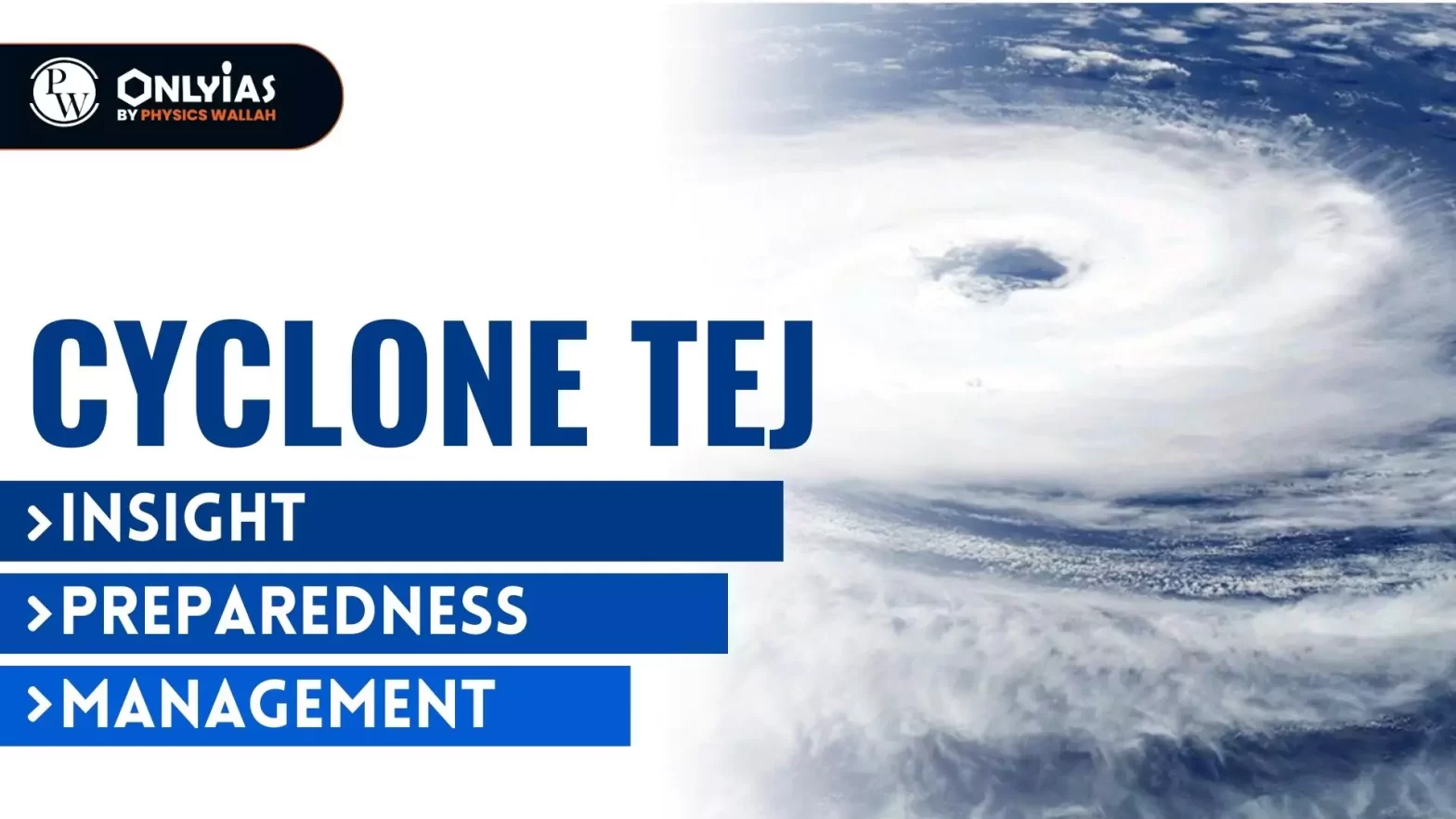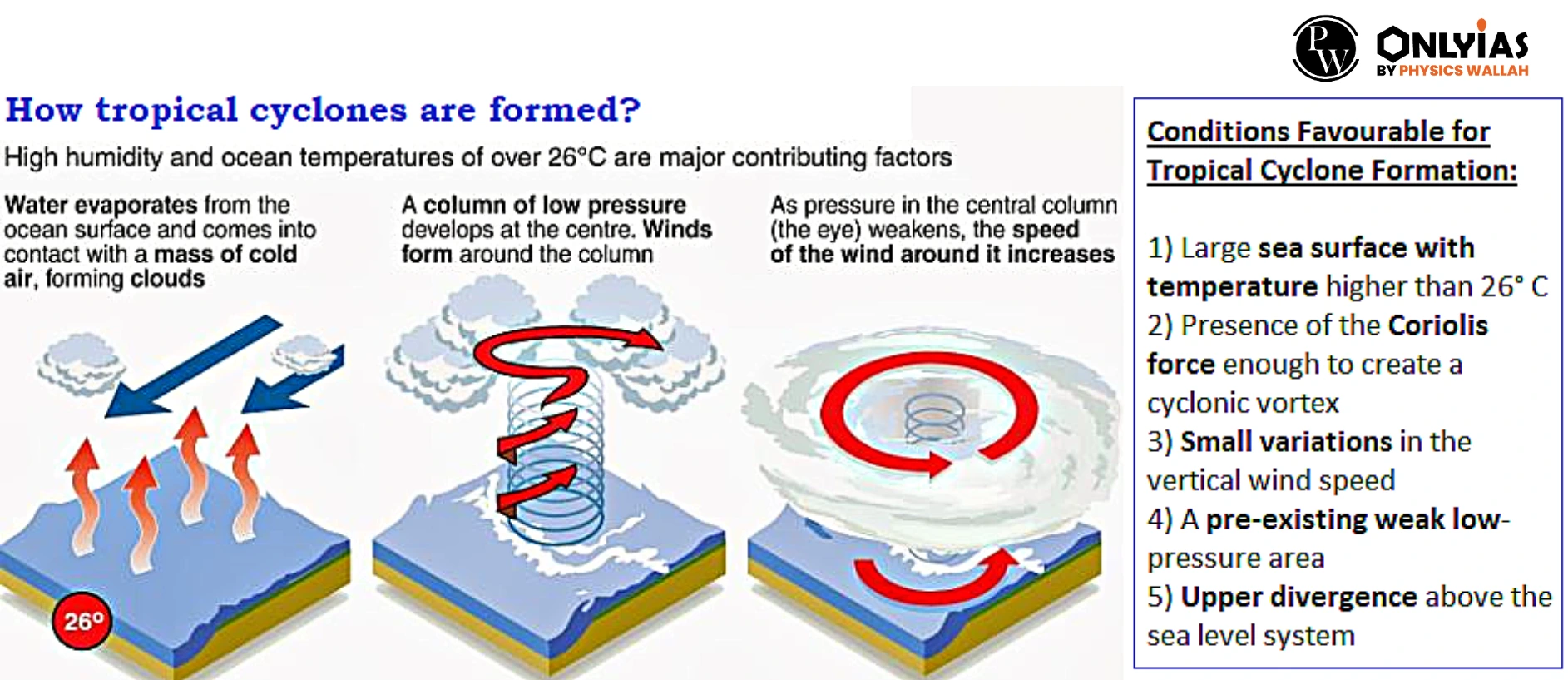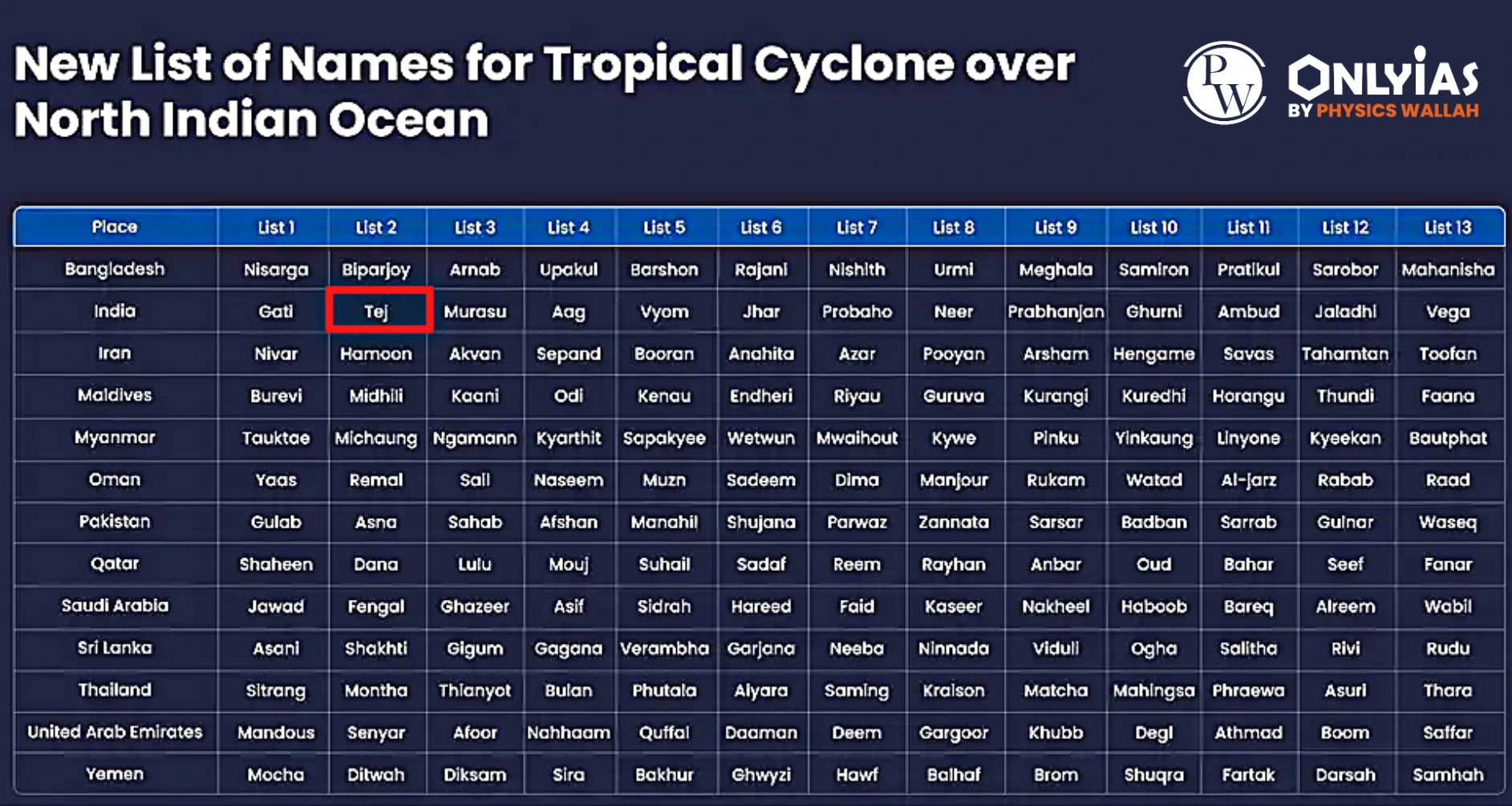The India Meteorological Department (IMD) has issued a warning about weather changes in Maharashtra due to a possible Cyclone Tej that is expected to develop in the Arabian Sea.

Context: The India Meteorological Department (IMD) has issued a warning about weather changes in Maharashtra due to a possible Cyclone Tej that is expected to develop in the Arabian Sea.
| Pressure system | Pressure condition at the centre |
Pattern of wind direction |
|
|---|---|---|---|
| Northern Hemisphere | Southern Hemisphere | ||
| Cyclone | Low | Anticlockwise | Clockwise |
| Anti-cyclone | High | Clockwise | Anticlockwise |


| Must Read | |
| NCERT Notes For UPSC | UPSC Daily Current Affairs |
| UPSC Blogs | UPSC Daily Editorials |
| Daily Current Affairs Quiz | Daily Main Answer Writing |
| UPSC Mains Previous Year Papers | UPSC Test Series 2024 |
Cyclone Tej is the first post-monsoon cyclone of the 2023 season in the Arabian Sea.
The 1970 Bhola cyclone aka the Great Cyclone of 1970 was a devastating tropical cyclone that struck East Pakistan (present-day Bangladesh) and India's West Bengal on November 12, 1970.
Cyclone Biparjoy hit India’s Gujarat coast recently, on June 15, 2023.
The Coriolis effect causes air to deflect, resulting in the characteristic rotation of cyclones in the Northern and Southern Hemispheres.
Cyclone tej is developing in Arabian Sea

<div class="new-fform">
</div>